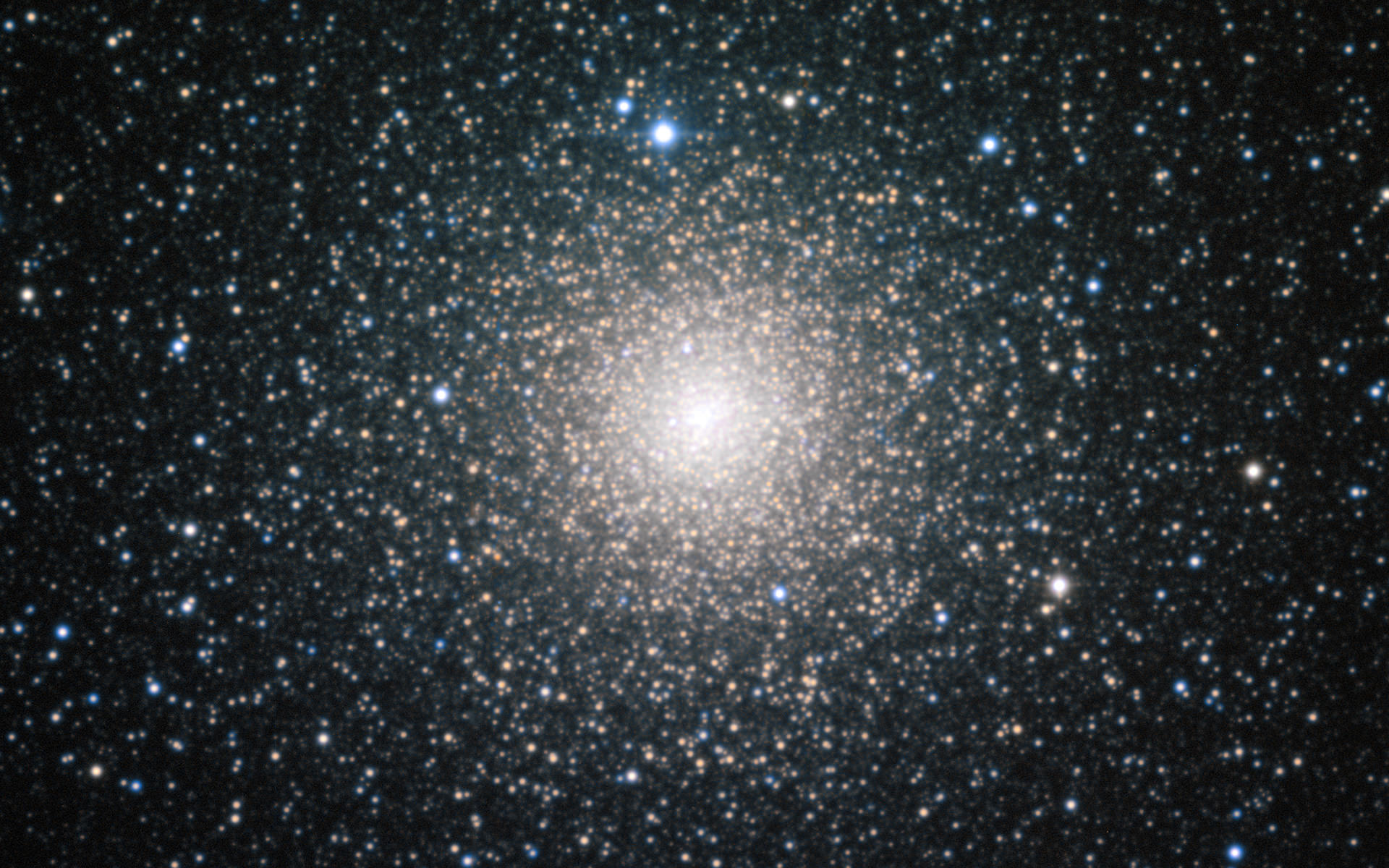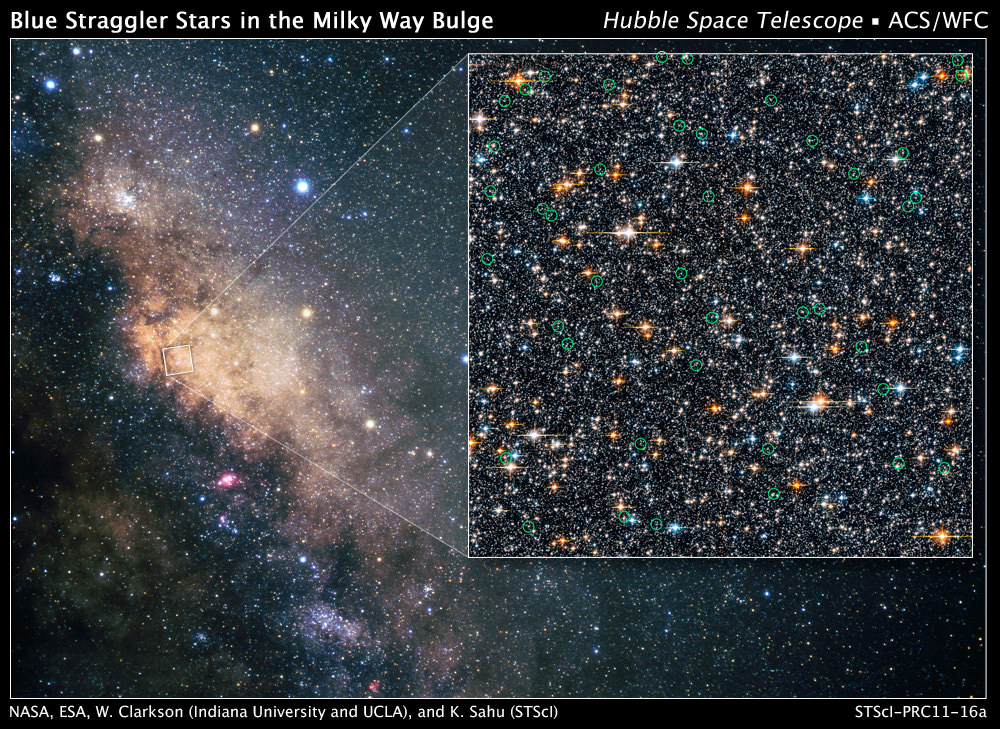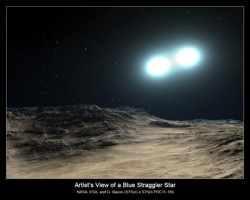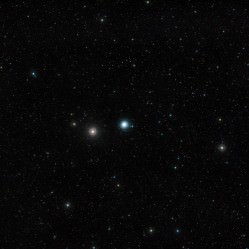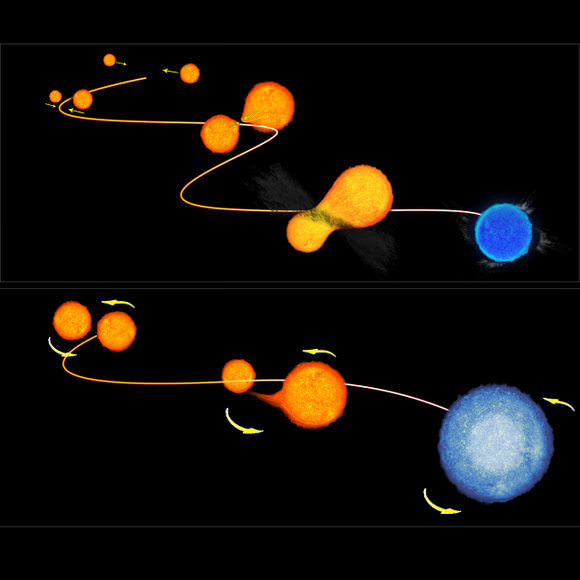A unique and enigmatic variety of stars known as blue stragglers appear to defy the normal stellar aging process. Discovered in globular clusters, they appear much younger than the rest of the stellar population. Since their discovery in 1953, astronomers have been asking the question: how do these stars regain their youth?
For years, two theories have persisted. The first theory suggests that two stars collide, forming a single more massive star. The second theory proposes that blue stragglers emerge from binary pairs. As the more massive star evolves and expands, it blows material onto the smaller star. In both theories, the star grows steadily more massive and bluer – it regains its youth.
But now, a surprising finding may lend credence to the second theory. Astronomers at the Nicolaus Copernicus Astronomical Center in Poland recently observed a blue straggler caught in the midst of forming!
The binary system that was studied, known as M55-V60, is located within the globular cluster M55. Dr. Michal Rozyczka, one of the research scientists on the project, told Universe Today, “The system is a showcase example of a blue straggler formed via the theoretically predicted peaceful mass exchange between its components.”
The team used both photometric (the overall light from the system) and spectroscopic (the light spread out into a range of wavelengths) observations. The photometric data revealed the light curve – the change in brightness due to one star passing in front of the other – of the system. This provided evidence that the astronomers were looking at a binary system.
From the spectroscopic data, shifts in wavelength reveal the velocity (along the line of sight) of a source. The research team noted that the system’s center of mass was moving with respect to the binary system. This will occur in a semi-detached binary system, where mass transfers from one star to the other. As it does this, the center of mass will follow the mass-transfer.
From both photometric and spectroscopic observations (which covered more than 10 years!) the team was able to verify that this object is not only a binary, but a semi-detached binary, residing at the edge of M55.
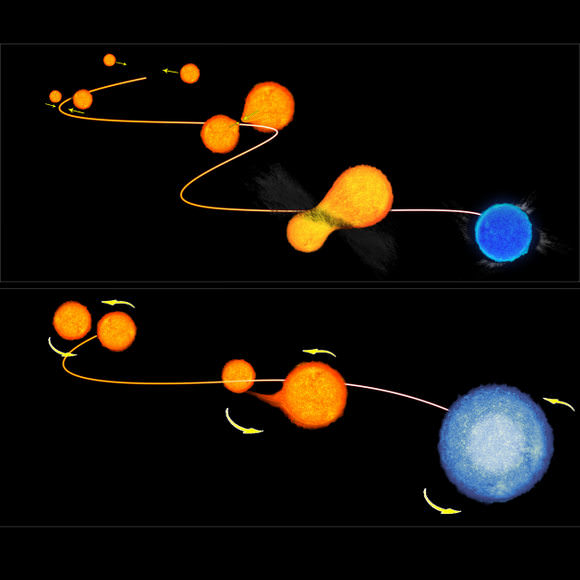
“The system is semi-detached with the less massive (secondary) component filling its Roche lobe,” explained Dr. Rozyczka. “The secondary has a tearlike shape, with the tip of the tear directed toward the more massive primary. A stream of gas flows out of the tip along a curved path and hits the primary.”
How do we know that it is in fact a blue straggler? The simple answer is that the secondary star, with is gaining mass, appears bluer than normal. This blue straggler is clearly in the process of forming. It is the second observation of such a formation, with the first being V228 in the globular cluster: 47 Tuc.
This research verifies that semi-detached binaries are a viable formation mechanism for blue stragglers. The binary was discovered by happenstance, in a project aimed at determining accurate ages and distances of nearby clusters. It’s certainly a surprising result from the survey.
The results will be published in Acta Astronomica, a peer-reviewed scientific journal located in Poland (preprint available here).

